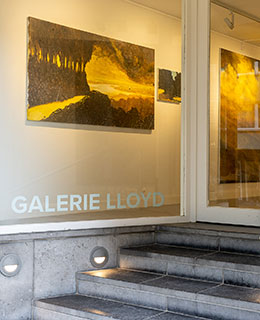No products in the cart.

William Sweetlove
MERRY-GO-ROUND
Retrospective 1969-2023
Friday 14/04/2023 — Sunday 07/05/2023
Opening Sunday 16/04/2023 at 16.00
In the presence of Alderman Bart Plasschaert (City of Ostend – department Culture)
Curator: Daniela Chirion
“Temporality and eternity are two concepts that increasingly compete in my work. I have always been interested in fossils, which I define as the residues of history. The problem these days is that fossils don’t have to be conserved anymore: everyone conserves what they consider important and this includes thinking, which I call ‘fossil thinking’.
What do I consider a fossil in art? I make sculptures in plastic, resin, polyurethane; all of these are synthetic products made from petroleum, itself a natural, organic fossil. When we crack the molecules of petroleum we produce hydrocarbons — gasoline, diesel fuel, oils, benzene. When petroleum products are burned they generate pollution and cause global warming.
Ethylene and propylene distilled from petroleum are the basic material for the production of plastics, polyesters, nylon — all the products we need for everyday life. What is the basic problem? All of these products are here for eternity as fossils; nothing can destroy them. In the past, the human race simply burned them causing pollution and much more. My message is that we must recycle them and invest in the technology to do so. We will need them in the future. When we no longer have petroleum, we won’t have any more synthetics.
If climate change continues, the problems will just get worse. As an artist, I try to find solutions. Darwin taught us that creatures must adapt to their changing environment in order to survive. Today, the pace of change is so rapid that organisms do not have time to evolve and so they die out. If temperatures in the African continent were to rise by five degrees Celsius, elephants would die out so I am cloning them to smaller versions. Soon there will be too much sea water in the world but not enough drinking water, so I put boots on my dogs, give water bottles to the penguins and put back-packs on cloned frogs to give them some support.
The best way to keep the audience awake is not to preach but to turn the seats around. ‘Standing out’ is the message. I use mainly the primary colors: red, yellow and blue. Sometimes I use colors in between but the primary colors stand out the most (a brown beast in a green environment would have limited visual impact).
My favorite color red, for example, indicates more interpretation of everything as if the essence of the work suddenly becomes more valuable.
Some of my recent works are made of recycled bronze. Not the pure, fancy stuff, with which I have problems anyway — in the end, it’s just metal. I want to minimize that ‘rich’ material so I just throw a blob of paint over their heads.
Climate change is the basic of my research. I have always been inspired by the concept of art not busy with aesthetics but where social, political and ecological issues are involved. I am not a ‘green’ individual and politics leave me cold, but I want to leave a message behind me in the world without polluting it.”
William Sweetlove — ‘Mayday, Mayday… I Said no, no, no’
Art statement 1969-2011

